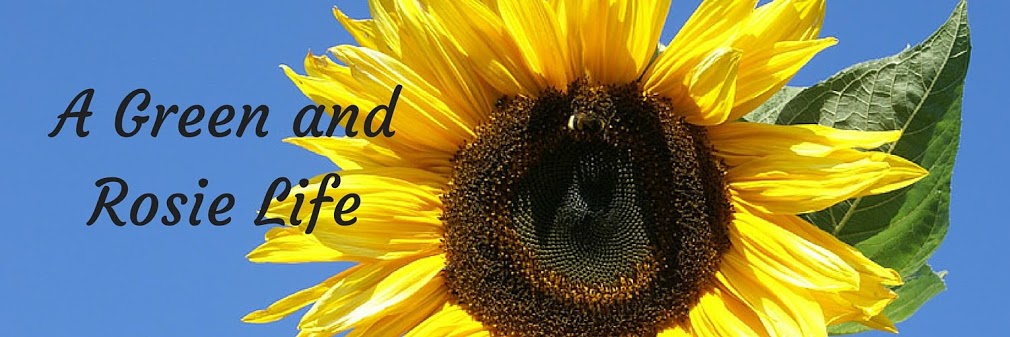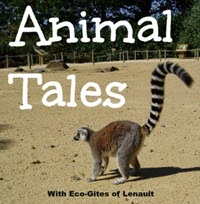One of the many things I love about Normandy is the amount of wildlife we see. It makes the horribly early school run a bit more bearable when we see so much wildlife (well, until it gets too dark!) and a walk or trip in the car will always result is something beautiful being seen. Some animals like rabbits are commonly seen in many places but there is plenty of wildlife here that you might not see elsewhere.
Wildlife of Normandy
Roe Deer
The woods around us are full of roe deer and watching their delicate canter as they head away from a passing car or walker is a such a treat.In French a roe deer is a chevreuille where as a red deer is a cerf and a fallow deer is a daim. A female of any species is a biche and a stag is (somewhat confusingly) called a cerf.
Wild Boar
These large wild pigs live in the larger woodland areas but are very shy and in 8 years here I have never seen one. I have seen their tracks in the mud and the damage they do digging for food but that is it. One family staying in the gite did see one once though, a male, and said he was very impressive.The French for wild boar is sanglier and you will often see the meat made into dried sausages (saussisons).
Red Squirrels
These adorable creatures are the resident squirrel of France where there are no grey squirrels to compete against. Autumn is a great time of year to see them as they are busy gathering nuts to store for the winter. Unlike other small mammals they rarely hibernate unless we have a prolonged cold spell so they need these hidden supplies to survive.The French for squirrel is écureuil and whilst most foreigners struggle to say squirrel, most non-French speakers have trouble pronouncing écureuil correctly, myself included.
Stone Martens
The stone marten, also known as a beech marten, is similar to a pine marten but is a species not found in the UK. It is common in France although not often seen as it is nocturnal. It can cause problems for poultry owners and will kill chickens so secure night time sheds are advisable. It is not unknown also to overwinter in lofts where it can make a lot of noise when it moves around at night!In French a stone marten is known as a fouine which is reflected in it's Latin name Martes foina. This is also the name for a weasel in French.
Hares
In the UK hares are becoming increasingly rare and whilst I saw them when I was younger and lived in The Cotswolds I am not sure I ever saw one in Kent. However, in Normandy they are frequently seen especially if you are around at sunrise (i.e. on the school run!). They are one of my all time favourite animals (along with hippos which sadly we don't see in France!) and I have a Hare Pinterest board in their honour.The French for hare is lièvre which presumably is where the English word of leveret, for a young hare, comes from.
Toads
Each spring our little pond gets a couple of good dollops of frog spawn in it and as the year progresses the tadpoles grow into froglets. Not all the froglets are, in fact, frogs and some should actually be called toadlets (if such a word exists). It is difficult to see the toadspawn as it exists below the surface and in thin strands rather than clumps but it must be there because, as well as the toadlets, we also have a lot of adults toads ... who like nothing more than pretending to be a stone when I go out at dusk to shut the birds in and then move when I am not expecting them too!I also wanted to include toads in my Normandy wildlife list simply because their name in French is sure to elicit a few sniggers from readers. The French for toad is crapaud (pronounced crappo!).
Buzzards
I couldn't finish a list of Normandy wildlife without including at least one bird. I previously wrote a post about why Normandy is good for birdwatching and what rarities you might be lucky to see but buzzards are a bird that you are sure to see every day if you stay at Eco-Gites of Lenault. They are amazingly common swooping over the landscape or resting on posts and fences. They are beautiful birds and I never tire of seeing them.The French for buzzard is buse pronounced somewhat like booze.
This is just a fraction of all the wildlife you could see when in Normandy. If you click on the label Wildlife/flowers in the right hand column it will bring up all the posts I have written.
From the list above, I have only yet to see a wild boar and I am hopeful that will happen one day. Have you seen many of the creatures on list list here in Normandy or have you seen any other species of note? Do please let me know in a comment.
This post will be linked to the weekly Animal Tales blog linky which opens on Tuesday 22nd September on this blog. Come and link up your animal blog posts or come back and read lots of lovely animal blog posts.
All images are from Wikipedia and are marked for re-use.









We get lots of raptors here abouts and toads are an introduced pest species in Australia that we are continually trying to eradicate, and there's even the odd wild boar although I don't think they are native. The rest of your animals seem so foreign and unusual to me, things only seen on TV.
ReplyDeleteAnd of course when I see your native wildlife I think the same thing - that it is so foreign and unusual!
DeleteJust come to Lou Messugo and you'll see sanglier galore; they certainly aren't shy around here!!!!
ReplyDeleteThat's so amazing that you get to see most of these wildlife everyday. We have field of horse on our way to school and that in itself ease our journey too. Normandy sounds amazing! :)
ReplyDeleteNormandy certainly is a wonderful place - even this morning, in the dark on the school run, I saw a mouse of some sort and the eyes probably of a fox shining in the car lights. For the two previous days an owl swooped away from the same fence post.
DeleteWow, I guess as i'm stuck indoors a lot I miss out on seeing lost of wildlife. It would be great to live in a place like normandy and see lots of animals. I like the red squirrel best! So cute! #AnimalTales
ReplyDeleteAngela from www.daysinbed.com
The squirrels are adorable but always too fast to photograph. On the way back home last night we saw two deer in the field but I didn't have my camera with me and it was not a good place to stop.
DeleteSuch beautiful photographs - and such stunning wildlife. You live in a beautiful place.
ReplyDeleteThank you (although the photos are not mine). Normandy is very beautiful.
DeleteHi Rosie, what a great selection of wildlife you have there! Unfortunately here in Greece hunting is still allowed which I think contributes to the lack of wildlife here. Saying that though we do get Loggerhead turtles nesting here on Zakynthos and Monk seal are said to inhabit the island around the rocky side, but I don't know anyone who has seen one.
ReplyDeleteWe do get birds of prey here (mainly buzzards) and they can be seen perching on telephone poles and sometimes swooping down for small prey in the olive groves. I've never seen deer here, although where I grew up had plenty nearby and I'm sure that once I did see a Marten of sorts here. I didn't get a clear look, so I can't be sure, but it wasn't a cat or a dog!
You've got some lovely pictures there. Thank you for sharing them with us.
I'd love to see a loggerhead turtle.
DeleteThey hunt tin France but it is well regulated in this area with only a certain number of animals allowed to be killed and the populations do not seem to suffer for it (unlike my winter dog walks when they are shooting in the woods near us!)
I'd love to see a red squirrel though apparently I'm more likely to see a black one now in East Anglia...Stella just thinks they're all chase-able! A lovely look at your local wildlife :)
ReplyDeleteSome of our reds are black in colour but apparently the UK blacks are a different species - I hope you get to see one soon.
DeleteWhat a collection of animals in your neighbourhood. Always nice to know there are red squirrels about.
ReplyDeleteWe are very lucky and I never tire of seeing our wildlife (especially red squirrels!)
Deletefab selection of wildlife and lovely photos. In the UK last week we saw foxes, red squirrels and a stag ran in front of the car in the forest of dean, all we see here are stray cats, oryx and camels
ReplyDelete